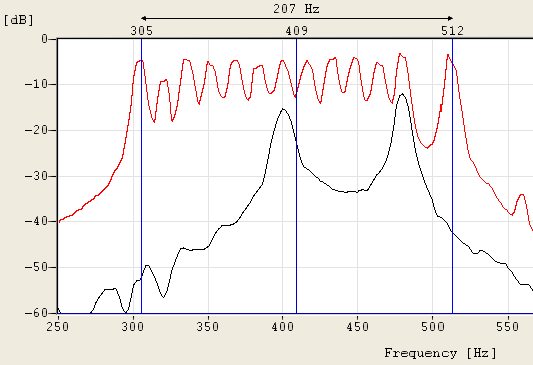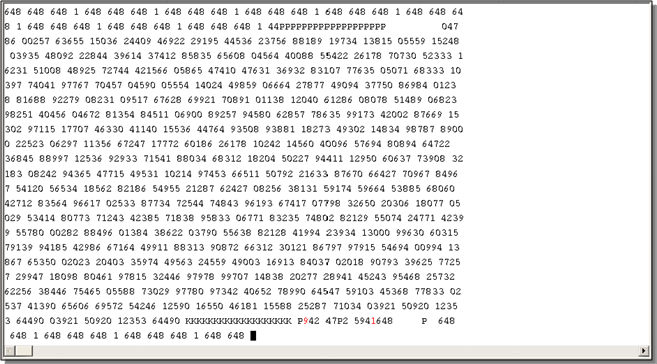
SP-14 is an AM modulated sequential 14 tone mode, which is optimized for the transmission of numeric codes.
|
Parameter |
Value |
|
Frequency range |
HF |
|
Operation modes |
Broadcast/Simplex |
|
Modulation |
AM, SUB MFSK-14 |
|
Speed |
133.3 ms |
|
Receiver settings |
AM |
|
Input format(s) |
AF, IF |
|
Additional Info |
14.891 MHz, 14.888 MHz, 15.791 MHz, 16.291 MHz |
The tone separation is 16 Hz. The center frequency is 409 Hz and the bandwidth is approximately 210 Hz. Each tone has been assigned a character:
Ø 10 tones are assigned to the numerals 0...9
Ø One tone is used as a start character
Ø One tone is used as a stop character
Ø One tone is used as a space character
Ø One tone is used as a repetition indicator
A transmission is initiated with a start sequence, which identifies this mode and may be used for accurate tuning. This sequence is transmitted at 1 Baud, which makes it readable even during very unfavorable conditions.
The data proper is transmitted at a rate of 7.5 Baud. A sequence of 19 'P' characters is initially transmitted followed by the five digit code words. The transmission is terminated by transmitting 20 'K' characters. As the transmission rate is very low this mode is insensitive to fading and multipath propagation.
To decode an SP-14 signal it must first be demodulated using an AM demodulator in order to retrieve the MFSK signal. The simplest way is to use the AF output of the receiver and select receiver AM demodulation. If a receiver IF output is used, AM demodulation is not available and decoding becomes difficult. However, using the MFSK demodulator the transmitted symbols may be retrieved. A MFSK IAS using 16 bit over sampling will retrieve symbol clock. In order to process both baud rates used by SP-14, the IAS has to be configured to a baud rate of 15 Bd. Thus at a rate of 1 Bd 15 symbols per transmitted symbol, and at 7.5 Bd two symbols per transmitted symbol must be received with a certain tolerance. Even if for instance the same character is received 15 times in succession, error correction is impossible due to the fact that in case of repetition of numerals the numeral itself is followed by the repetition indicator 'R'.
Tuning an SP-14 Signal
Using the WAVECOM decoder as an example the following shows how decoding SP-14 is performed:
After tuning the receiver to the selected frequency and turning AM demodulation on, the receiver AF output (Line Out) is connected to the AF input.
If the receiver has been correctly tuned the following FFT display is shown:

For the FFT, bandwidths of 500 Hz, 1000 Hz, and 4000 Hz may be selected. A bandwidth of 500 Hz will ensure a good quality of signal display, and will also enable a fine tuning of the signal. Then using the display cursors the center frequency of the signal may be determined. All 14 tones, except tone 2 and tone 13 are clearly displayed. The missing tones are the start and stop indicators which are of course only transmitted at the start and the stop of the transmission. It is important to tune to the signal center frequency as accurately as possible, because accuracy of this tuning directly influences the quality of demodulation and the synchronization. In case the receiver AF output is used, the center frequency should be as close to 409 Hz as possible. The value of the center frequency is directly transferred to the decoding software module.
The screen shot below shows a decoded SP-14 signal.
